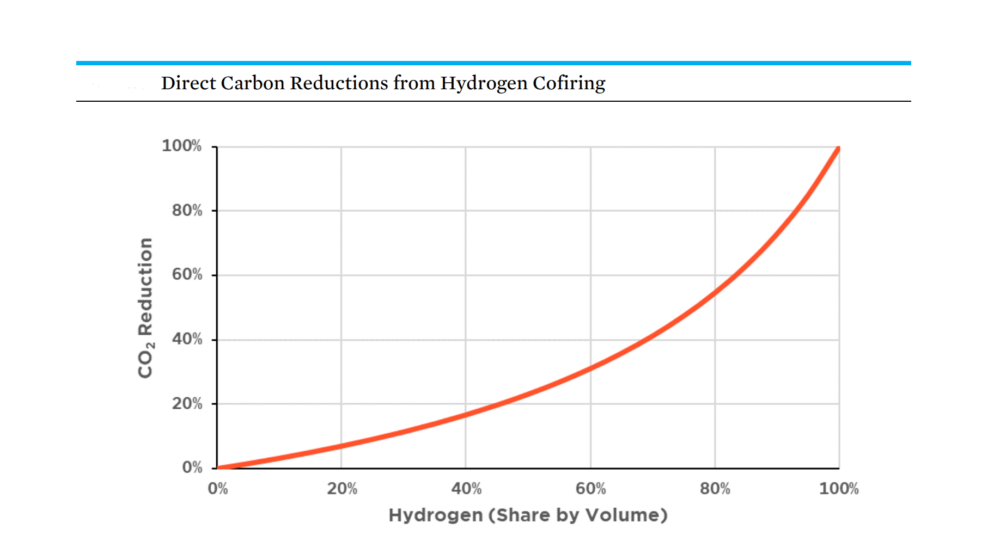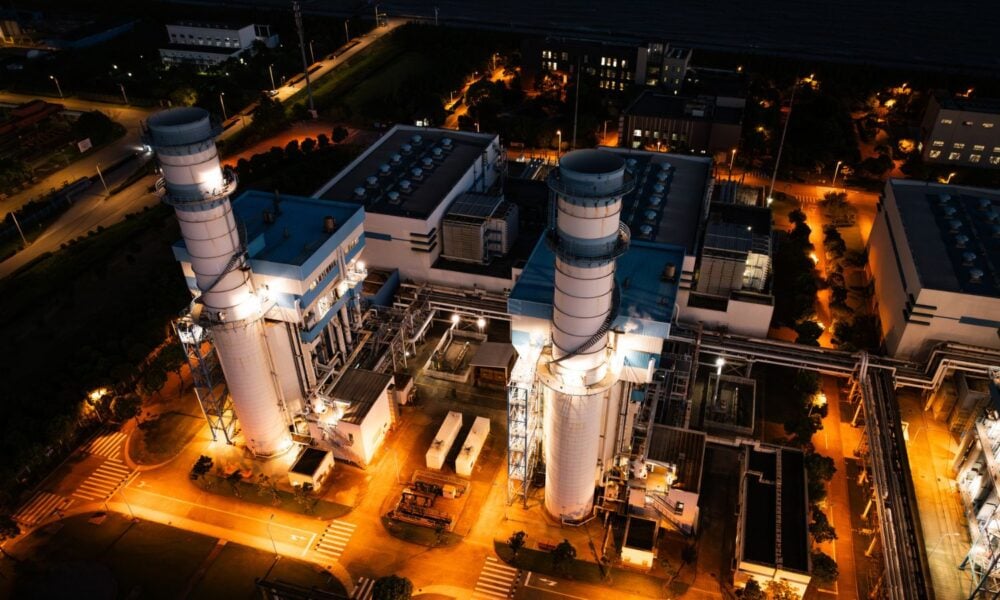Power plants fueled by methane gas have a serious climate problem. The fuel, commonly known as natural gas, now powers the biggest portion of US electricity generation—more than 40 percent. It has also grown to be the largest source of carbon pollution from the US power sector, even as zero-carbon renewable energy has been growing by leaps and bounds. Moreover, gas-fired electricity generation hurts communities and the environment in numerous additional ways beyond climate.
So the conversation around how to rapidly drive down gas plant pollution has been (rightly) heating up.
While maximizing energy efficiency is crucial, there will still be enormous amounts of electricity needed. Renewable energy like wind and solar is a clear solution: generate more electricity from renewables, and you can use less gas, and minimize the range of harms that come with that gas.
But instead of taking the renewables-based approach, some in the fossil fuel industry and utilities with a vested interest have insisted that they can continue forward with the full, ongoing use of gas—or even an expanded role for gas—while nodding to one of three possible future approaches: cofiring with hydrogen, adding carbon capture and storage (CCS) to the plant, or blending biomethane.
If it sounds too good to be true—that the best possible approach to addressing gas plant pollution relies on the full, ongoing use of gas plants—that’s because it is.
Bringing fuller context to the conversation is the rationale behind a new analysis from the Union of Concerned Scientists (UCS). Our new release, consisting of a one-two punch of an issue brief and a publicly accessible tool, is aimed at helping you understand and explore for yourself the varying implications of each approach—including the complicating factors for hydrogen, CCS, and biomethane that point strongly to renewables as the best option.
Behind first impressions
Some of the non-renewables approaches may seem attractive at first glance. Take cofiring with hydrogen, for example. A molecule consisting solely of a pair of hydrogen atoms, with no carbon in sight, that can be used as fuel in place of gas in a power plant? Sounds like a no-brainer of a deal, right?
That’s what project proponents would have you believe.
But it turns out there’s a lot more to the story of adding hydrogen to gas plants, and when you pull the lens back, you see a much more complicated reality. There’s the fact that hydrogen packs a lot less energy than the gas it’s supposed to replace, for example. The fact that hydrogen has to come from somewhere. The fact that the fuel has the potential to bring along lots of other baggage, as described below.
That more-to-the-story reality also applies to CCS and biomethane, which are also garnering industry attention for their potential carbon-cutting abilities, including in gas plants. Assessing those approaches similarly requires attention to the bigger picture.
That’s what UCS set out to document and what we share in our new analysis: the details behind the headlines and press releases, and the critical need for those details to inform deliberations about which approach to take—and how each of those details strengthens the case for a renewables-centered solution.
Beyond the headlines
Our new issue brief, Beyond the Smokestack: Assessing the Impacts of Approaches to Cutting Gas Plant Pollution, examines hydrogen co-firing, CCS, and biomethane use, applying three different scopes for assessing each, and for weighing them against renewables.
One scope is the narrow carbon picture, the one that you’ll hear about most readily: what these approaches mean in terms of how much carbon dioxide (CO2) comes out of a gas plant’s smokestack, or how much less a plant can be said to be emitting. This is the one that might show up in an announcement or a press story about a proposed project for a new gas plant or a retrofit of an old one, where they’ll talk about a specific percent reduction in CO2 that their proposed changes will bring about.
Even in this narrowest view, they might not actually do some of the basic math for you. Announcements around using hydrogen, for example, sometimes talk just about the cofiring portion (the percentage of the fuel that would come from hydrogen). Because hydrogen provides less energy, though, the reductions in carbon pollution from the plant’s smokestack can be a lot less than that blending percentage. Mixing in 30 percent hydrogen by volume, for instance, would work out to only an 11 percent drop in smokestack CO2 emissions. In the case of CCS, an often-obscured issue is the energy it takes to drive that carbon capture and prepare the carbon for storage, which can make a gas plant produce less electricity, or run longer to produce the same amount. Good decision making starts with having good information about details like those.

Then there are the broader climate implications of these approaches. The second perspective we offer in our new analysis comes from pulling back the lens to take into account not just carbon at the smokestack, but also the carbon from other steps in the process, as well as other gases that also trap heat when thrown up into the atmosphere. Notably for a discussion of gas plants, that includes methane, which traps many times more heat than CO2.
The fuller-climate-pollution view reveals the CO2, methane, and other heat-trapping gases associated with the plants, their fuels, and these proposed approaches. The impacts in this category could be from leakage of the fuel—the hydrogen, the biomethane, or the ongoing use of methane gas. The added pollution could also come from producing the fuel, which can vary widely depending on the process used. Hydrogen with a high carbon intensity, for example, can be even more carbon-intensive than methane gas. That means hydrogen use in a gas plant could reduce CO2 at the smokestack but ultimately be responsible for an overall increase in heat-trapping emissions.
An important third perspective for assessing project proposals captures impacts beyond the climate pollution, at a plant and from the broader system that each approach involves—other dimensions that decision makers need to be using to weigh the merits of a given proposal.
One such critical dimension includes other pollution that can harm people’s health. Burning hydrogen increases the production of nitrogen oxides, for example, which if not addressed can increase harms for people living near a plant. An approach that potentially leads to more gas use (as with CCS) can mean more impact to not just people living near a gas plant, but also people living near gas wells serving that increased demand. And biomethane use, in risking driving production of more biomethane, can mean more air and water pollution hitting people living near the sources of that fuel. of that fuel.
The broader suite of issues also includes things like safety, water implications, land use, and impacts on customers’ electricity bills. And the risk of perpetuating inequities, given that people of color and people with low incomes are disproportionately likely to live near gas plants, spend more on energy as function of their incomes, and be left out of decision-making processes.
Similar consideration of renewable energy like solar and wind shows, by contrast, how it can offer electricity without CO2 emissions, without methane emissions, with much less land use than those of many gas plant-oriented scenarios, and with minimal life cycle carbon, air, and water impacts.
Into the numbers
Beyond the Smokestack steps through a range of issues revealed by each of those perspectives for each approach, provides resources for more information about those issues, and offers specific examples. The accompanying Gas Plant Alternatives Tool lets you test different scenarios of your own to better understand possible implications.
Concerned about these issues in general, or confronting a particular gas plant proposal you want to better understand? Want to see for yourself how different carbon intensities for the hydrogen or assumptions about the biomethane change the overall climate math? Want to have a sense for the implications and magnitude of other issues that are—or that should be—part of the conversation? And, given that renewable energy should be the first choice for generating electricity for cutting gas plant use: want to see how much solar or wind it might take to make the green hydrogen—and how much further the renewable electricity could go if the electricity got used directly instead?
The tool can shed light on all those issues. With just a few pieces of basic information about a particular scenario, the tool can offer a better understanding of the potential—and the pitfalls—of different approaches to cutting gas plant CO2 pollution.
Toward good decisions
The tool and the issue brief are aimed at making clear how critical it is to evaluate different approaches fully to see how they stack up, especially when it comes to potentially investing in long-lived gas-oriented solutions rather than directly displacing gas use by ramping up renewables instead. The multiple perspectives in the fuller picture have to be on the minds of electricity sector decision makers, from the prospective project proponents to the public utility commissioners and environmental regulators in charge of assessing a project on behalf of the public.
We can help those decision makers make good decisions about gas plants and carbon cutting by sharing our understanding about what needs to be in the picture. That’s particularly important in these cases because some others engaging in the process are motivated to keep those details out. We know that the fact that some of the approaches to cutting CO2 could keep gas in a central role for a long time makes them favorites of the fossil fuel industry and electric utility allies—and that whenever the fossil fuel industry is involved, you can bet that obfuscation and disinformation are close at hand.
And we don’t need to have all the answers to make a difference. We can still push to get the right questions asked—and answered—to make sure that decision making is centered on, and engaging with, the people who will be most affected by the decisions, and that good decisions get made. That includes making sure that renewable energy—which is the overwhelmingly better choice when it comes to rapidly driving down gas plant pollution harms—is on the table when proposals are being considered and decisions are being made.
“The extensive range of complicating effects of using hydrogen, CCS, or biomethane to reduce gas plant carbon pollution points strongly to the value of using truly clean energy to the fullest to displace generation by gas plants,” our issue brief concludes. “For communities and the climate, the imperative is clear: use renewables more, use gas plants less.”

